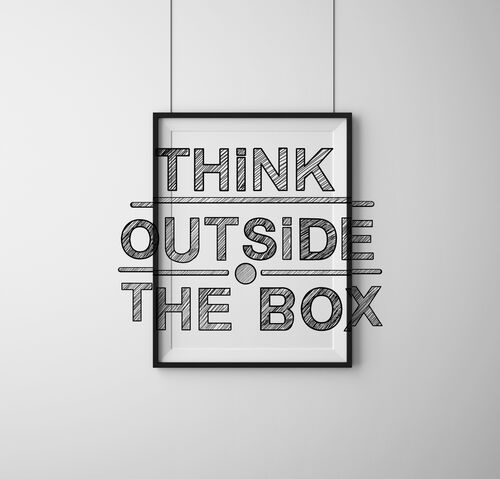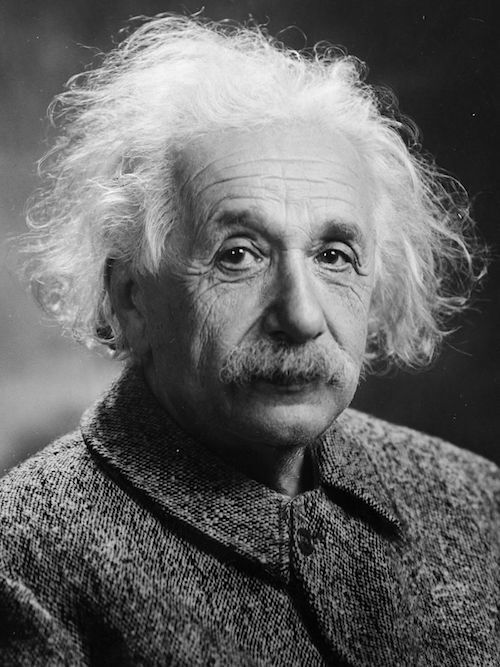How Geniuses Use Creative Thinking to Solve Problems
How Geniuses Use Creative Thinking to Solve Problems
Creative thinkers rule the world!
They are continually seeking faster, better, and easier ways to accomplish their goals.
Creative thinkers are responsible for many of the great breakthroughs, innovations, and progressions in human history. They know that sometimes one good idea is all it takes to change the course of a business or an individual life.
The Biggest Enemy of Creative Thinking
Mechanical thinking is the enemy of creative thinking.
It tends to be rigid and inflexible.
It’s, “My way or the highway.”
Mechanical thinking is rooted in fears of failure or making a mistake and losing time, money, or both. It is triggered by fears of criticism or disapproval.
Poor thinkers:
- Think in terms of black and white rather than shades of gray.
- Think in extremes of yes vs. no and up vs. down.
- Think that there is only one way to solve a problem when there are usually many.
- Are victims of “homeostasis.”
- Are stuck in their comfort zones.
- Resent and fear anything new or different, even an improvement in conditions.
But this is not you…
Discover your learning style so and how they determine your learning patterns, preferences, and approaches.
You Are a Potential Genius
You have more creative potential than you could use in a hundred lifetimes. You actually become more creative each time you come up with something new.
It turns out that creativity is the single best indicator or predictor of success in life and in work. The more creative you are, the better your ideas will be to improve your life, work, and everything around you.
One good idea can be enough to change the entire direction of your life.
How To Recognize Creativity
Creative people are curious. They ask a lot of questions and are never satisfied. In fact, you can become more creative just by asking more questions about the things going on around you rather than being content with superficial answers.
Genius Throughout the Ages
There are many studies of the qualities of geniuses throughout the ages. The first fact they discovered was that intelligence was not a matter of IQ or academic qualifications. Many so-called geniuses had average or slightly above-average intelligence. Instead, genius or excellent thinking was more a matter of attitude and approach toward the inevitable challenges of life.
It appears that geniuses have three qualities that are developed over time:
1) A Genius Keeps an Open Mind
First, they approach every problem or situation with an open mind, almost a childlike attitude of exploration and discovery. The more open your mind is to new and different approaches to situations in your life, the more likely it is that you are going to get insights and ideas that move you out of your comfort zone.
Ideas that enable you to think outside the box.
Geniuses continually ask “Why?” and “Why not?” and “What if?”
2) Geniuses Consider Every Aspect of a Problem
Second, geniuses carefully consider every aspect of a problem, refuse to jump to conclusions, and gather more and more data instead. They test and validate their tentative conclusions at each stage. They avoid a rush to judgment. They are always open to the possibility that they could be wrong, or that their idea is no good.
The Best Solution
Albert Einstein was once asked, “If there was a major emergency or potential disaster that was going to destroy the earth in 60 minutes, and you were asked to find a solution, what would you do?” Einstein replied,
Einstein replied,
“I would spend the first 59 minutes gathering information, and the last minute solving the problem in the best possible way.”
In business today, especially in new product development, the more time you spend working closely with customers to be sure that your new product or service idea is exactly what they want, need, and are willing to pay for, the more likely it is that you will be successful in a fast-changing and highly competitive market.
3) A Genius Takes a Systematic Approach
Third, geniuses of all kinds use a systematic approach to problem-solving and decision making.
Accomplished mathematicians, physicists, doctors, mechanics, and people in other professions do not throw themselves at a problem like a dog chasing a passing car. They rather follow a carefully designed checklist and work their way through a problem, step by step toward a conclusion.
Atul Gawande, in his book The Checklist Manifesto, tells the story of two investment experts, both successful, but one far more successful than the other.
It turned out that they both had many years of experience in evaluating and making substantial investments for themselves and their clients. But, the more successful adviser had developed a checklist of essential questions to ask and tests to apply to an investment proposal before making a decision.
The other adviser used many of the same techniques and tactics to appraise an investment, but he operated more from intuition and experience. As a result, he often lost money when he shouldn’t have.
Here was the interesting point that Gawande made. The first adviser was consistently more successful than the second. But, on various occasions, he made mistakes and lost money.
The reason was invariably the same. He had neglected to follow his own checklist. He had missed one or two vital points in his list of important considerations. When he went back to following his checklist meticulously, his investment record improved significantly.
The Systematic Problem-Solving Method
I have discovered and synthesized a single, problem-solving method that you can use for the rest of your life.
Step 1: Define the Problem or Goal Clearly
Define the problem or goal clearly, in writing, on a page in front of you. If you are working with a group, write and rewrite the problem or goal on a flip chart or a whiteboard until everyone agrees, “Yes. This is the correct definition of the problem.”
In business, developing the correct definition of the problem often makes the solution appear obvious.
Step 2: “What Else is the Problem?”
Once you have defined the problem or goal clearly, you ask, “What else is the problem?”
Beware of any problem for which there is only one definition. Define and redefine the problem in several different ways to make it more amenable to the correct solution.
The worst thing you can do is to come up with a great solution to the wrong problem or to a problem that does not exist.
The Process of Innovation
The philosophy of every successful business and successful executive is CANEI, which stands for “Continuous and Never-Ending Improvement.”
Resolve to move boldly out of your comfort zone. Continually search for newer, better, faster, and cheaper ways to achieve your goals and to move ahead.
Be prepared to fail over and over again when you are developing or introducing new products, services, methods, or strategies. Nothing ever works out the way you think it will. You will experience constant frustrations, difficulties, setbacks, and temporary failures on the way to success.
Thomas J. Watson Sr., the founder of IBM, was once asked how to succeed faster. He replied, “If you want to succeed faster, you must double your rate of failure. Success lies on the far side of failure.”
In fact, there is no such thing as failure. There is only feedback. Difficulties come not to obstruct, but to instruct. The formula has always been to try, try again, and then try something else.

































